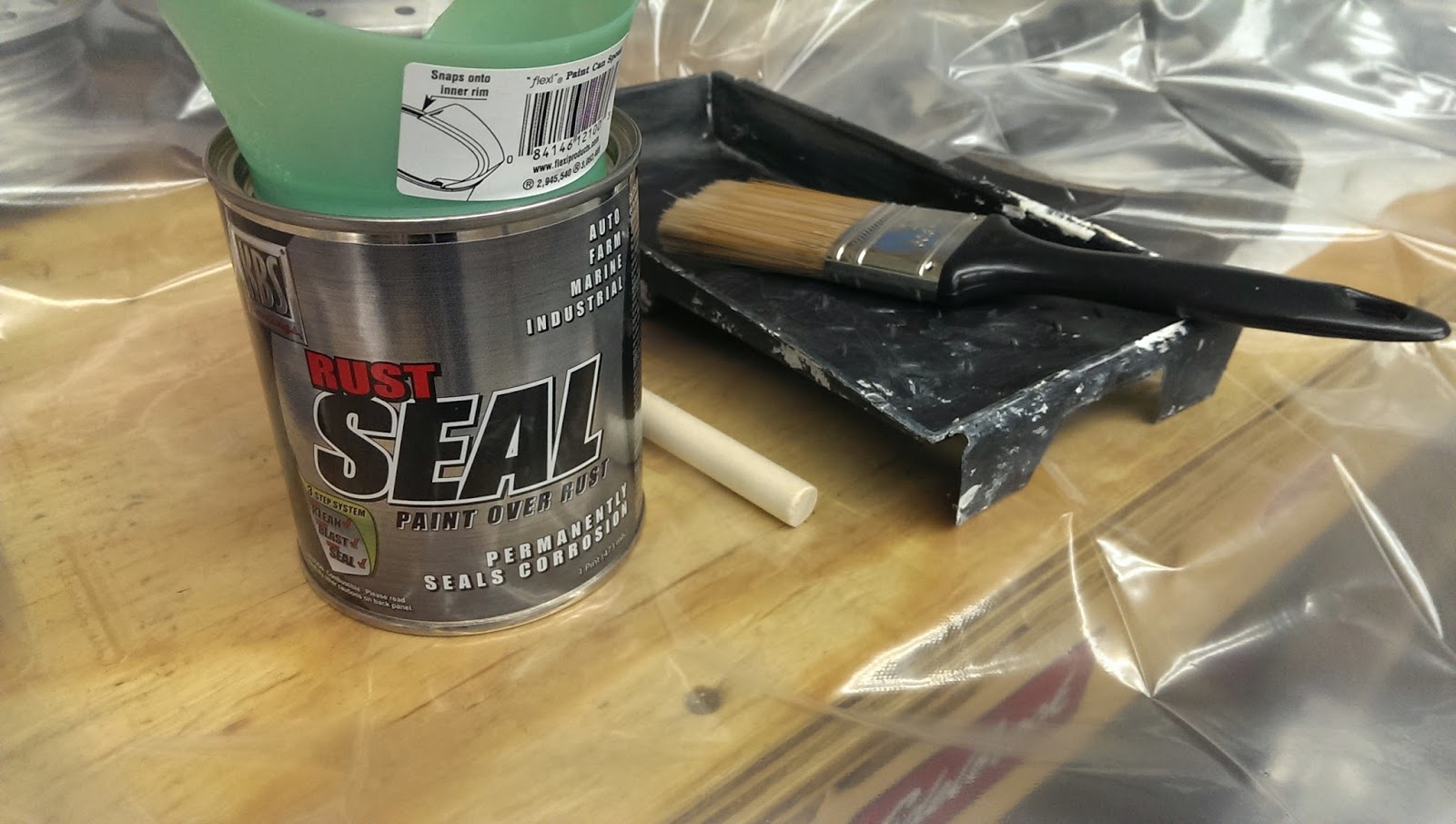The wheels on this motorcycle turned out to be a bit of a work. The picture below shows the condition from
when I got the bike. The rims and spokes
all very rusted. I had a hard time
deciding what I wanted to do with these.
Do I pay the high cost to have the chrome re-plated? Maybe look for used wheels in better
condition, or swap them out for something else? Or just blast off the chrome
and paint them?
I decided that chrome plating was too expensive, and I did
not want to just paint the wheels like most other garage builds, so I started
to look for alternatives. In my
searching I found mikesxs where you can find a variety of aluminum vintage
style rims for a reasonable price. These
looked to be a good option. Aluminum
polishes to a nice finish and is lighter than the stock chrome plated steel
rims. The Rims I bought were one size
wider than the stock rims – So I went from 1.5” to 1.85” in the front and 1.85”
to 2.15” in the back. My plan was to use
the stock size tires on these rims, so that the wheels will still fit between
the forks and fenders. Plus, the tire
will be stretched wider on the rim which should reduce tire roll when
cornering.
The first thing I needed to do was to remove the tires and take
apart the wheels so I could clean up the front and rear wheel hubs, and brake
parts.
After cleaning up the wheel hubs and polishing out all the
oxidation, I decided to put a clear coat on the hubs knowing that it is hard to
get into the crevices to maintain a clean look once the wheels are put
together. With the parts ready to go, it
was time to begin lacing the rims with my new sets of chrome plated
spokes.
Lacing the wheels was trickier than I thought it would
be. If you don’t start in the right
hole, or if you don’t put them in the exact order, they do not fit right. Even with looking at pictures of completed
rims, this took a while for me to get it right.
Below are the pictures of the process for the front wheel:
After just completing the front, the back wheel went
together much quicker for me. Now both
rims were laced up and I was ready to tighten the spokes and true them up.
I started by setting up the wheel on my stand, and did my
best to evenly hand tighten each spoke all the way around the rim. Next, I put
a dial indicator on the side of the rim and measured the runout. I went around adjusting the spokes with the
6mm wrench until I got this within about .05” of runout.
Next I checked for hub to rim concentricity by setting the
dial indicator on the bottom of the rim.
I went around again many times, tightening and loosening until I reduced
the play to about .05”.
Now that I was close to true, I wanted to make sure I had
the spokes torqued to the proper specification.
The manual calls for 1.1 – 1.5 ft-lbs for the wheel spokes. I did not have a proper spoke torque wrench
but I was able to get in the ballpark using a force gauge. The force gauge measures in lbs, so I can get
the torque by multiplying that with the perpendicular distance the force is
being applied. I converted the spec to
Inch lbs, and measured the length of my wrench.
Then I used a wire to connect the force gauge to the end of the wrench
and did my best to hold it perpendicular as I used it. I went around the rim making sure none of the
spokes were too tight, and then tightened the ones that were too loose.
Of course now, I had to get the dial indicator set up again
and true the rim up further. Now I could
do this, and I had a feel for how tight the spokes should be. I repeated the runout and concentricity
adjustments again until I had them within the tolerance specified in the manual
(0.0197”).
After the long painful process of truing the rims, I was now
ready to mount the tires. I set the
tires in the sun for about 30 minutes to get them soft and pliable. I accidently punctured one of the new inner
tubes when mounting the front tire, so I had to take it off, make a trip to the
power sports store, pick up a new tube, and try again – more carefully. Eventually I got the tires on. I had a little bit of trouble getting the
beads to pop up all the way around, so I sprayed them with Windex to lubricate
the tire beads, inflated them until they seated, then let out some air so they
were down to the correct pressure. Now
the wheels were done and ready to go.



















































